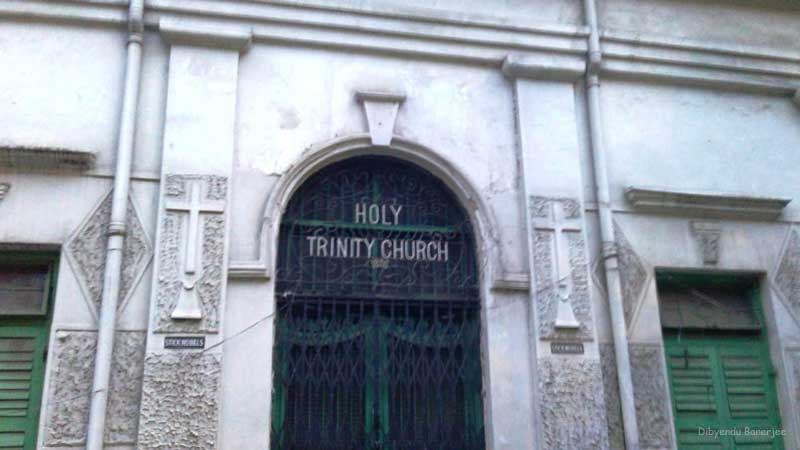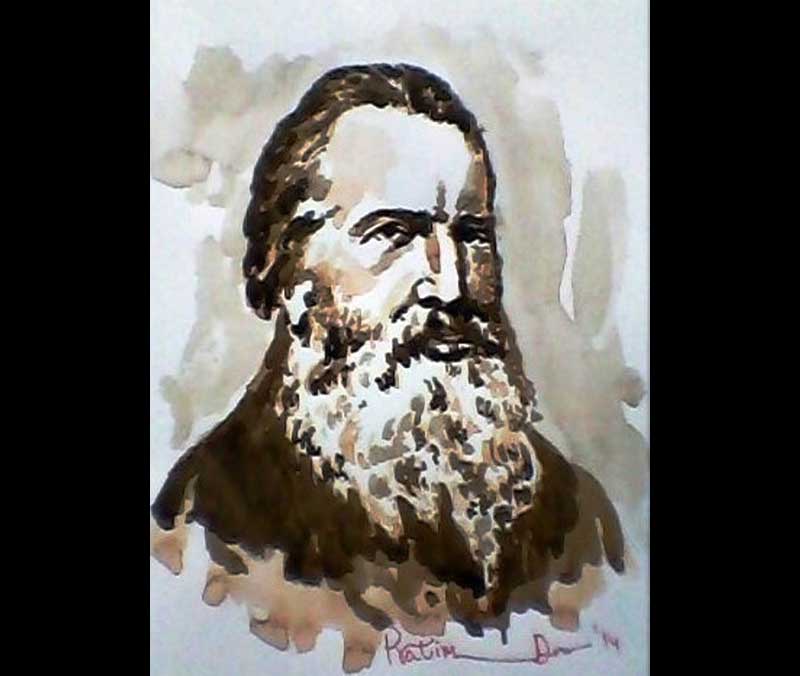
The Holy Trinity Church, situated at 33B, Raja Rammohan Roy Sarani, was opened for divine service by Rev. Deer in November 1826. As the Church was founded by the Ven’ble Archdeacon Corrie, the Church was known among the local people as ‘Corrie Church’ until 1887. Archdeacon Corrie came to India as A Chaplain in 1806 and on the recommendation of Mr. Pratt, the then Secretary of the Church Missionary Society, the Calcutta Committee purchased an estate in Mirzapore area in 1820, for 20,400 Rupees. During the early days, the site was occupied by a tannery, while the adjoining area was unfriendly and insecure.
In fact, once it was a dense forest, complete with an unhygienic tank till 1823, when a new road was constructed in the area and was named as Amherst Street. As the direct result of the newly constructed road, the unhealthy swamp area was converted into a dry healthy residential area. Adjacent to this site Archdeacon Corrie laid the foundation stone of the Holy Trinity Church.


The Holy Trinity Church was the first Church in Bengal in which the Christian worship was conducted in Bengali. At the outset, it was designed as a chapel and was known as ‘CMS Chapel’ for many years. The choir-seats and altar were added on a later date to the original building. Though the Church was locally known as ‘Corrie Church’ till 1887, named after its founder, later it became popularly known as ‘Long Saheb-ka Girja’, since Rev. James Long was closely connected with this Chapel and St Paul’s College and School in the adjacent area for a long time.

Born in Ireland (1814-1887), James Long, an Anglo-Irish priest of the Anglican Church, joined the Church Missionary Society in 1838 and arrived in Calcutta in 1840, to join the CMS in Calcutta. He was in charge of the CMS mission in Thakurpukur, which was a distant village in those days and from 1840 to 1848, taught the non-Christian students at the school run by the CMS at its premises located on Amherst Street. By 1851, he had also set up a vernacular school for boys in Thakurpukur.
It is interesting to note that, Dinabandhu Mitra, the author of the famous Bengali play Neel Darpan, was one of the former students of James Long, at the CMS School on Amherst Street. In 1861, when Rev Long received a copy of the play from the author, he anonymously translated into English and distributed the English version to a number of prominent Europeans both in India and abroad. In the consequent law suit, Long was found guilty and was sentenced to one month’s imprisonment with a fine of Rupees one thousand. James Long served the term and Kaliprasanna Singha paid the fine on his behalf.

The Holy Trinity Church was an Anglican Church, before the unification of the Church of North India. From the very beginning, the Church Missionary Society ran this Church. It is decorated with a big clock on either side of the steeple. The children are baptized and christened on a circular font built of marble placed in a corner of the rectangle prayer hall.
The Holy Trinity Church in Calcutta was visited by many eminent persons of the period, along with Sri Ramakrishna Dev, who visited the holy place with Mathura Mohan Biswas, one of his devotees and son-in-law of Rani Rashmoni, and advised his followers to visit this ‘Holy Place’. The heritage building of the Church is properly maintained and was thoroughly repaired and renovates in 2003.
